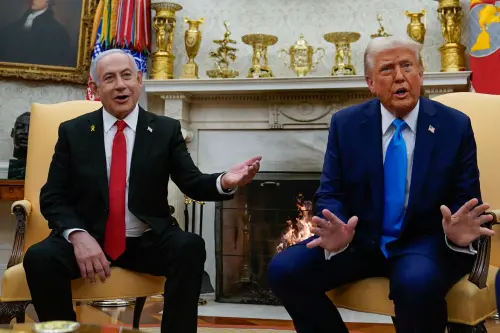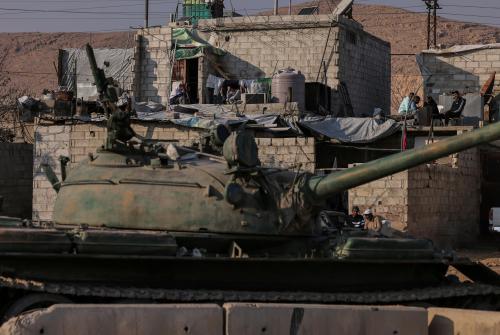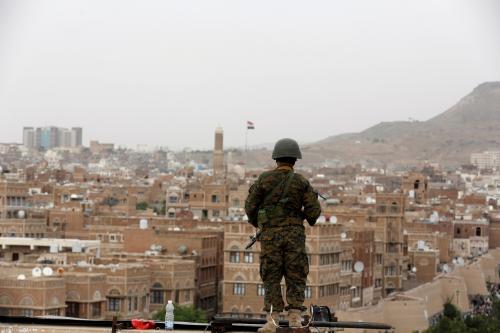The date of May 23 on the Western calendar corresponds to the second of the month of Khordad on the Iranian calendar. It is a date of some political significance and poignancy for Iranians. Sixteen years ago on May 23, 1997, reformist cleric Mohammad Khatami surprised the country and the world with a massive upset victory in the election to succeed then-president Ali Akbar Hashemi Rafsanjani. The date itself, Dovvom-e Khordad or the Second of Khordad, became a mantra for change and the shorthand for a new political movement, one that was focused on gradual reform within the confines of the existing framework of the Islamic Republic.
The significance of Khatami’s victory continues to reverberate, even in today’s Iran. While politics in the Islamic Republic had always featured a strong element of competition among the array of factions that comprised the revolutionary coalition, the Second of Khordad was the first time since the revolution that an Iranian presidential election proved genuinely competitive. The invocation of the date as a rallying cry was short-lived, however. Iran’s conservatives responded to this vigorous new political force with a backlash that paralyzed Khatami’s presidency and targeted many of the reform movement’s leading partisans and intellectuals with violence, repression and forced exile.
The agenda of the reform movement centered around the concepts of moderation, tolerance, accountability and rule of (man-made) law. These were revolutionary ideas in the Islamic Republic circa 1997; however, Khatami was determined both as a matter of strategy and as a function of his cautious nature to avoid revolutionary action. Popular support represented the reform movement’s most powerful instrument of leverage— at least at the outset, before the stratospheric expectations attached to it were inevitably dashed—but it was one that the reformists were almost invariably unwilling to use. This made the movement viable within the paranoid parameters of the revolutionary theocracy, but it ultimately left its agenda vulnerable to the willingness of their hard-line opponents to use any means necessary.
Ultimately, however, it was not simply repression that undermined the reformists. Rather, it was the evidence, borne of the eight-year Khatami experiment and the bald-faced manipulations of the system by his successor, that the Islamic Republic cannot be durably moderated by a movement that sidesteps its central idiosyncrasy— the divine mandate of the office of the Supreme Leader, which in the Islamic Republic transcends such trivialities as the rule of law. Despite the real tactical genius they displayed in seizing the presidency and sustaining their movement in its early years, the reformists never managed to navigate beyond this impasse, either intellectually or strategically. And the events of 2009 further eroded the viability— and thus, the popular appeal— of the reformist approach of gradualism, incrementalism and change from within.
Although the reform movement was stymied and largely forced to the sidelines of Iranian decision-making, it managed to have a meaningful, positive impact on the lives of Iranians through specific policy advances as well as the general reinvigoration of civil society and the media. Some of its achievements endure, such as the establishment of elected city and village councils for the first time in Iranian history. Still, in the eight years since Khatami left office, his two most important contributions— the unleashing of Iranians’ sense of political entitlement and the rehabilitation of Iran’s role in the world— have been forcefully reversed. Judging from the orchestration of the current presidential campaign and, more broadly, Tehran’s embrace of autocracy in recent years, it is hard to envision an outcome to the June 14 election that restores either in the short term.
Today, the reformist movement is scattered and dispirited. It retains a small faction in parliament that, to its credit, has managed to navigate its minority party status with some adroitness. It asserts enough of a stake in the legitimacy of the Islamic Republic that its most prominent candidate for the presidency, Mohammad Reza Aref, managed to survive the electoral vetting process. But it is a quest that seems purely symbolic given the fate of the last election’s reformist candidates, Mir Hossein Mousavi and Mehdi Karroubi— who have been held, mostly incommunicado, under house arrest for more than two years.
On its sixteenth anniversary, the Second of Khordad was all but ignored within Iran. Rather, Tehran hopes that the presidential campaign just getting underway will end the cycle of electoral unpredictability and republican aspirations that 1997 Khatami victory incited. And instead of marking the milestone of the reformist upset at the ballot, the current power brokers prefer to commemorate another anniversary which happens to fall on the subsequent day. The third of Khordad, or May 24, marks 31 years since the liberation of the city of Khorramshahr, which had been occupied and heavily devastated by the September 1980 Iraqi invasion. Unfortunately, these themes of heroic resistance against a more powerful adversary are more resonant with the Iranian leadership today than the mantra of accountability, respect and rule of law invoked by Khatami and the Second of Khordad.
The Brookings Institution is committed to quality, independence, and impact.
We are supported by a diverse array of funders. In line with our values and policies, each Brookings publication represents the sole views of its author(s).



Commentary
The Legacy of Reform in Iran, Sixteen Years Later
May 23, 2013